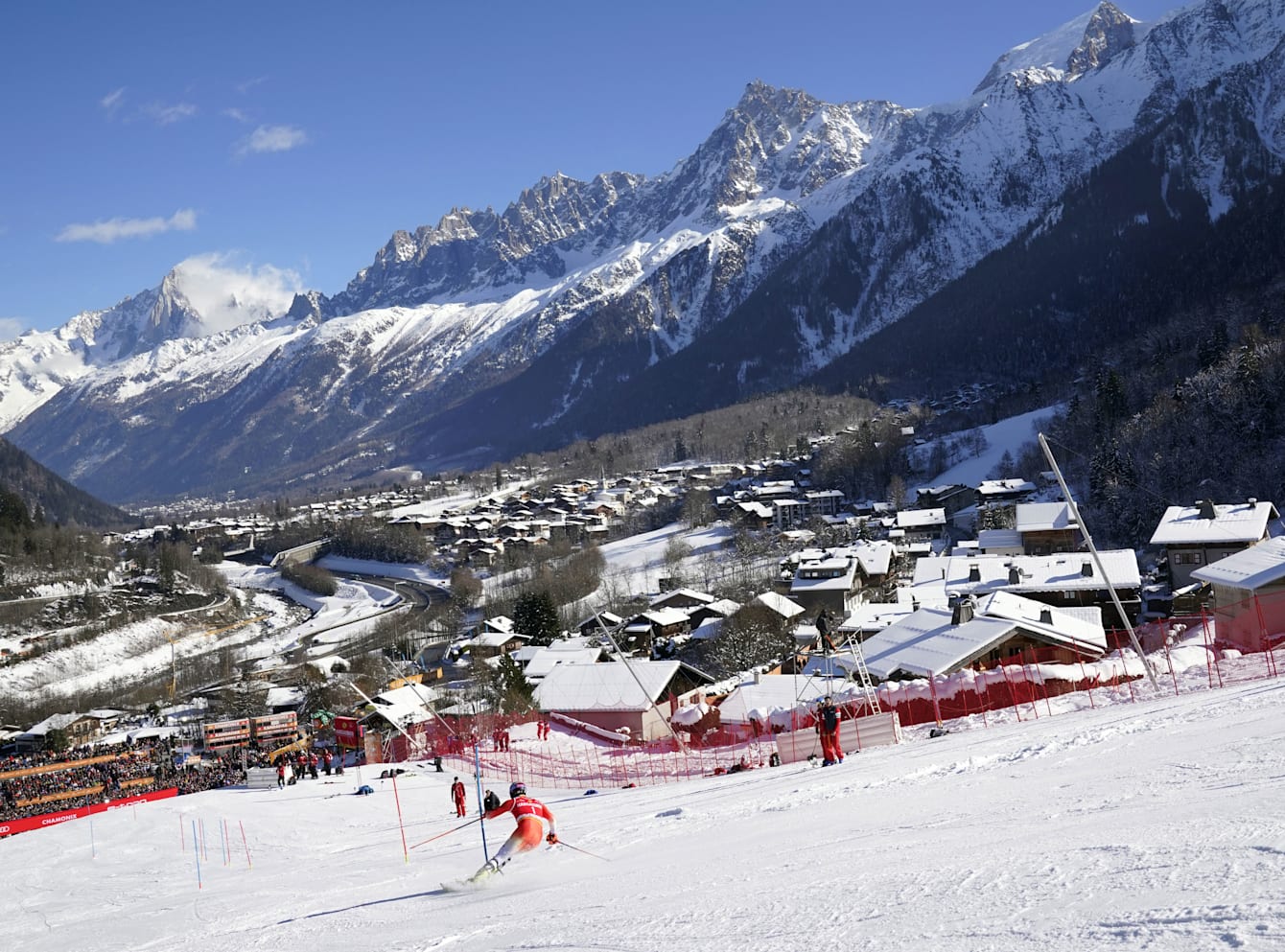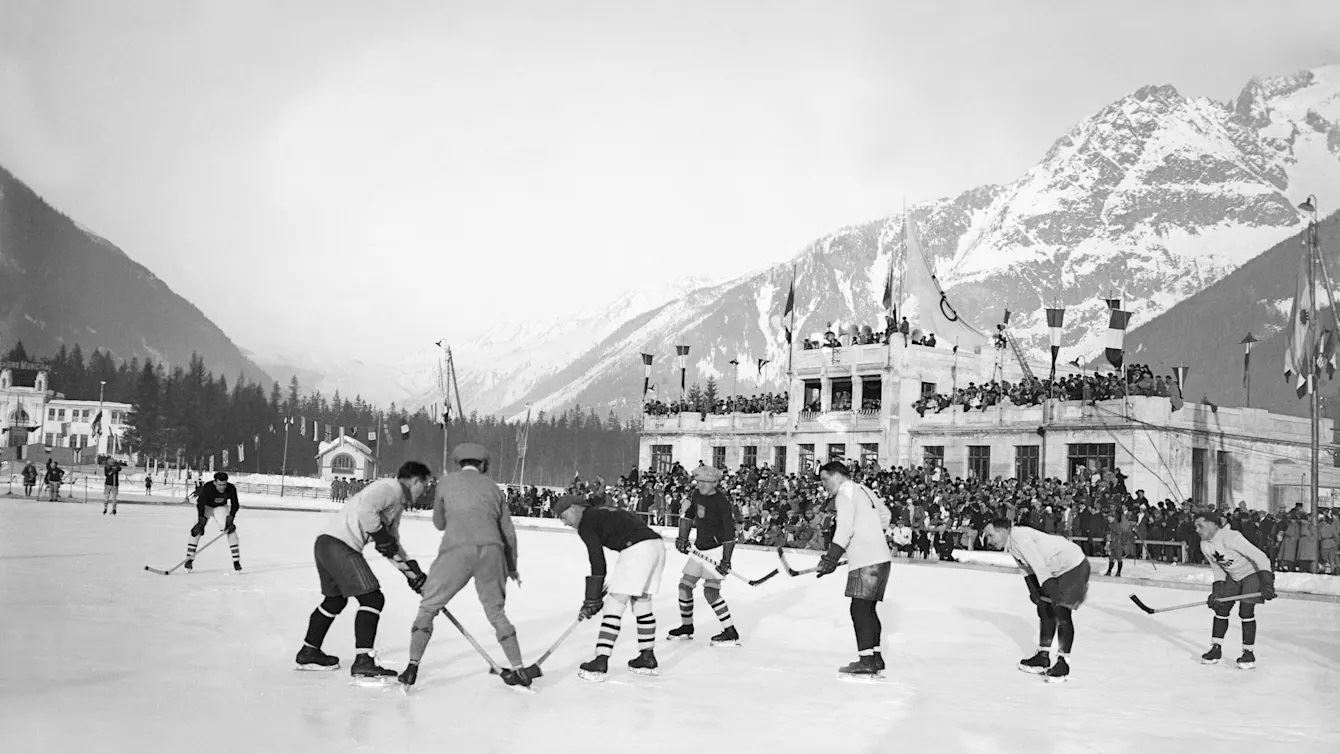24 January 2024 - The Olympic Winter Games are turning 100 years tomorrow, marking a revolutionary century of mountain sports driven by technological leaps and social progress. As we celebrate 100 years of sport on snow and ice, we look ahead to see how the Games can adapt to the challenges ahead.
In 1924, 258 athletes from 16 national teams came together in the small Alpine town of Chamonix, France, for what later became the first ever Olympic Winter Games. Since then, the Games have evolved to become the world’s most important winter sports event. Today, up to 3,000 athletes from over 90 National Olympic Committees take part in a growing number of disciplines, including the latest additions, such as freestyle skiing and ski mountaineering.
“Although Chamonix 1924 was only officially designated ‘Olympic’ by the IOC in 1926, it was nonetheless a key moment in the history of Olympism and the Olympic Games,” said International Olympic Committee President Thomas Bach. “And with the exception of two editions, the event has been a permanent fixture on the Olympic calendar for a century, garnering huge excitement every time, with winter sport on snow and ice continuing to fascinate.”
Including this first edition, held in Chamonix from 25 January to 5 February 1924, 24 editions of the Games have been hosted by 21 regions and 13 countries. Of the 258 athletes in Chamonix, just 13 were women. Nearly a century later, Beijing 2022 welcomed 2,871 athletes, 45 per cent of them women – a ratio which is expected to grow to 47 per cent at Milano Cortina 2026.
Originally based on sports practices from Europe that were accessible to few people, the Games have helped to introduce winter sports to wider audiences, for professionals and amateurs alike.
They have also propelled their hosts onto the global map of world-class resorts and destinations – offering a wide range of winter but also warm-weather activities.

Host benefits
The Olympic Winter Games continue to uplift mountain regions, which seize the opportunity to raise their visibility on a global scale. Following the Games, Chamonix experienced a national and international reputational boost, resulting in steadily rising visitor numbers. The town today hosts over 8 million overnight visitors each year, spread equally between the winter and summer seasons.
Over the century, lesser-known mountain regions worldwide have leveraged the Games' momentum to create lasting tourism infrastructure, sustainable transport options, entertainment events and sports facilities, enjoyed throughout all four seasons.
From Sapporo to Innsbruck, Olympic hosts have expanded their tourism portfolios to include not only sports but also cultural attractions, adding temporary and permanent jobs to local economies in sectors such as hospitality, construction, security and event management.

Sapporo 1972, for example, accelerated economic growth, contributing to the increase in the income of Sapporo citizens by 3.2 per cent each year between 1967 and 1972. And in Tirol, in 2021, the tourism industry directly and indirectly employed 60,000 people, generating around EUR 8.4 billion.
Aside from economic benefits, the Olympic Winter Games have created a ripple effect by inspiring individuals, communities and entire regions to embrace a healthier lifestyle, engage in mountain sports, and reap the physical and mental benefits of sporting activities.
The most recent Olympic Winter Games, Beijing 2022, are an example of how residents, including urban dwellers, embraced winter sports thanks to the Games. An estimated 350 million Chinese people engaged in winter sports in the run-up to and following the Games. By the end of 2025, approximately 5,000 schools across the country are set to include winter sports in their curriculum.
Winter sport will need to adapt to the impacts of climate change and mitigate their effects.Thomas Bach, IOC President
The future
However, with the evolution came an increasing recognition of the fragility of the environment on which winter sports depend. Today, climate change poses a direct threat to people and their livelihoods and particularly jeopardises sports that rely on snow and cold weather.
Over the years, Games organisers have used the event to raise awareness about the mountain environment and the importance of its conservation. Dubbed the first “green” Games, Lillehammer 1994 set concrete sustainability goals for the planning and delivery of the Games. Over time, with Olympic Agenda 2020 and Olympic Agenda 2020+5, the IOC has strengthened sustainability requirements for the Games.
“As with all sectors, winter sport will need to adapt to the impacts of climate change and mitigate their effects,” said President Bach. “This thinking was very much at the forefront when we adopted Olympic Agenda 2020 and Olympic Agenda 2020+5, inspired by the mantra of ‘change or be changed’. The IOC and the Olympic Movement are seeking to reduce our impact on the environment, not only to contribute to the greater good of society, but also so that sport, and notably winter sport, can continue to contribute towards creating a better world.”
Today, all potential hosts must demonstrate climate-responsible projects. From 2030, Games organisers will be obligated to minimise their emissions, strive to remove more carbon than the Games emit, and encourage others to take climate action.
With 89 per cent of all the permanent venues used at previous Olympic Winter Games still in use, the IOC demands that nothing is built only for the Games. Organisers must prioritise existing and temporary venues. If any new infrastructure is built, it must respond to the long-term needs of the local people, ensuring year-round use. Today, events can be hosted outside the main hosting region and even outside the host country.
For the last hundred years, people have been speaking about the magic of the Games. Our duty and responsibility is to ensure that this is the same in the next hundred years.Christophe Dubi, Olympic Games Executive Director
With temperatures continuing to rise across the globe, by 2040 only 10 to 13 nations may be able to host the Olympic and Paralympic Winter Games. This is one of the reasons why the IOC approved the principle of a double award of two successive Olympic Winter Games – the 2030 and 2034 editions – if the appropriate conditions exist. This would provide security for the athletes and the Olympic Movement, to allow the IOC to investigate strategies to ensure the future of winter sport. These could include: the notion of rotating the Olympic Winter Games within a pool of climate-reliable hosts; innovations and new technologies; co-hosting ice and snow events between different regions; and decentralising the organisation of the Olympic Winter Games to outsource certain competitions to experienced international and national event organisers.
“For the last hundred years, people have been speaking about the magic of the Games. Our duty and responsibility is to ensure that this is the same in the next hundred years,” said Christophe Dubi, the IOC Olympic Games Executive Director. “Society at large, and athletes in particular, are calling for activities – sports, events and the Olympic Games – to be socially, economically and environmentally responsible. We are responding to these calls.”

